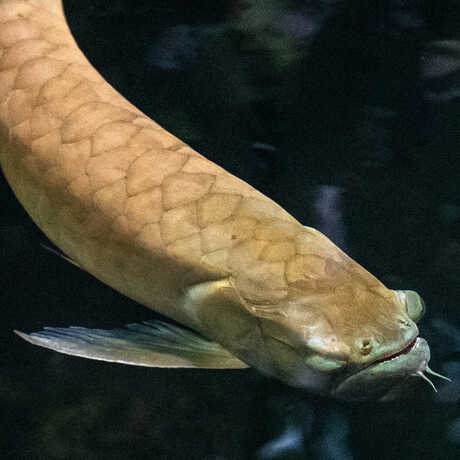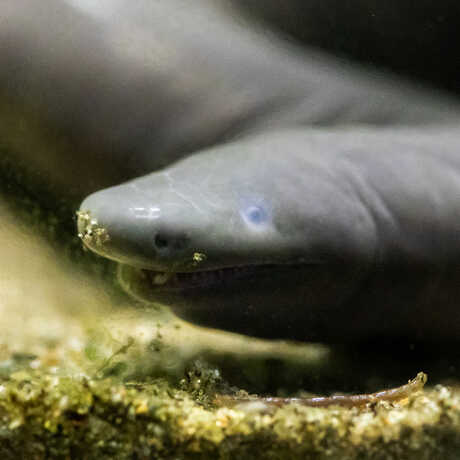Creature Closeup: Alligator Gar
Don’t tell Claude, but he’s not the only long-bodied, sharp-toothed, extremely chill species in Steinhart Aquarium.
Lurking in the shadows across from the Swamp exhibit is a misunderstood fish that has a lot in common with our iconic albino alligator—including his name: The alligator gar. It’s the second-largest freshwater fish in North America, and among North American euryhaline fish (fish that can tolerate both fresh and saltwater), the gar takes the gold.

Size: Up to 6 ft. and 100 lbs.
Range: Lower Mississippi River Valley and Gulf Coast south to northern Mexico
Habitat: Slow-moving rivers, bayous, lakes, and brackish waters
IUCN Red List Status: Least concern but listed as vulnerable by American Fisheries Society
For much of the 20th century, alligator gar got a bad rap for their intimidating size, menacing appearance, and relative abundance, which perhaps contributed to their reputation as a “trash fish.” Sadly, decades of overfishing, state-sanctioned culls, and habitat destruction have extirpated this incredible animal from its once-expansive range, which previously extended as far north as Nebraska.
Luckily, alligator gar are no longer considered a nuisance and enjoy protection in some states, but their numbers are dropping as their preferred spawning grounds—river floodplains—are dammed and leveed.

- Alligator gar are considered “living fossils” because they have changed very little in over 100 million years. Learn more at Science magazine >>
- Covered in thick, tough ganoid scales, alligator gar bodies are semi-rigid and well-protected against their only non-human predator: alligators. Learn more at U.S. Fish & Wildlife Service >>
- Alligator gar use their log-like looks and ability to remain motionless to their advantage, ambushing prey like fish and turtles—and occasionally birds and mammals. Learn more at the Florida Museum >>
- In the wild, alligator gar can live up to 50 years. The Academy’s 11 gar (four males, seven females) range in age from 20–35.
- Our animal care biologists feed our gar trout, herring, and/or capelin once a week, using feeding sticks to mimic the motion of their prey. This provides both nutrition and enrichment.
- Should you encounter bright-red alligator gar eggs in the wild, resist the temptation to eat them: They’re poisonous.
Our alligator gar habitat can be viewed from two locations: On the mezzanine level below Claude’s Swamp, and on the main level of Steinhart Aquarium right at the entrance to Water Planet.






